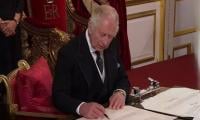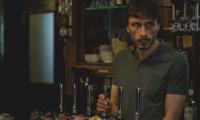Brooke Shields introduced me to Franco Zeffirelli. Not that I was friends with Brooke – but she took me to Franco, the Italian master of film and opera, who died on June 15, 2019, at the age of 96.
In the early 1980s, Brooke Shields was the first crush of many college boys who bunked their classes to watch matinee shows of ‘The Blue Lagoon’ (1980) and ‘Endless Love’ (1981). Not knowing that faces such as Ingrid Bergman’s, and figures such as Sophia Loren’s, had adorned the film screens much earlier, Brooke Shields was the best we could think and see of.
Franco Zeffirelli was the director of ‘Endless Love’, which was not one of his best, but still fascinated many youngsters for its portrayal of innocent teenage love. Karachi had not only cinemas such as Bambino, Capri, Capitol, Lighthouse, Lyric, Naz, Nishat, Palace, Plaza, Prince, Princess, Odeon, Regal, Rex, Rio, Paradise, Scala and over a dozen within a couple of kilometres of the city centre, but also libraries of foreign missions, for example, the American Center Library and the British Council one. They had ample collections of books and encyclopaedias and wide arrays of VHS cassettes. The video home system (VHS) had revolutionized the movie watching experience and offered new opportunities of entertainment.
A little probe into the life and work of Franco Zeffirelli led me to his two masterpieces based on Shakespearean plays – ‘Romeo and Juliet’ (1968) and ‘The Taming of the Shrew’ (1967). Both films were extravagant and rich in displaying the nuances of Shakespearean dialogues and drama. While Zeffirelli’s film version of ‘Romeo and Juliet’ remains to this day the best, ‘The Taming of the Shrew’ takes full advantage of Elizabeth Taylor and Richard Burton in their best performances during their peak years. Despite the new feminist critique of Shakespeare, the bard still enthrals audiences, and Zeffirelli augments the spell.
It was not just teenage love and Shakespearean drama that Zeffirelli excelled at. His historical and religious films and TV mini-series offered deep insights into the lives and experiences of historical and religious personalities – of course, with some lachrymosity. For example, his feature film ‘Brother Sun, Sister Moon’ (1972) portrayed the youth years of Saint Francis of Assisi (1182 – 1226) who was the son of a wealthy merchant but underwent a spiritual conversion following his experiences in the Crusades. Zeffirelli’s direction of the scene in which Francis renounces his worldly goods by defenestrating expensive sheets of cloths is inspiring and makes an immediate impact on the viewers.
Zeffirelli’s beautiful dramatization in the medieval churches and monasteries is a boon for history buffs. If you are interested in knowing how Europe fared before the Renaissance, you can get a first-hand feel of the church’s dominance on the one side and the plight of the common people on the other. Another good movie that comes to mind about the medieval monasteries is ‘The Name of the Rose’ (1986) based on the novel by Italian writer, Umberto Eco; starring Sean Connery and directed by the French film director Annaud (pronounced: Anno). But, perhaps the best religious TV mini-series that Zeffirelli directed was ‘Jesus of Nazareth’ (1977).
Its writers included Anthony Burgess, the famed novelist who had penned ‘A Clockwork Orange’ – also made into a film by Stanley Kubrick in 1971. Zeffirelli returned to his religious theme with ‘Sparrow’ (1993) based on a novel by the Italian realist writer Giovanni Verga. The story is based in the mid-nineteenth century Sicily where an epidemic of cholera is raging. A 16-year-old girl leaves her convent to go home to avoid contamination. Thus unfolds an emotional drama in which the girl is drawn to a young boy but ultimately has to sacrifice her love for religion.
Giovanni Verga brings us to Zeffirelli’s stunningly beautiful TV film ‘Rustic Chivalry’ (1982) which had been written and later dramatized by Verga in the 19th century. Zeffirelli used the opera written by Mascagni (pronounced: Mahskanyee) based on the story by Verga. This opera is an absolute delight to watch in the expert hands of Zeffirelli. The story is based again in a Sicilian village. The Italian rustic life portrayed by Zeffirelli is so realistic and wonderfully performed by all that you feel like living in that village. If you are a fan of Western music, you will absolutely love the scores.
As an aside, if you want to watch something more on Italy, you may watch ‘The Leopard’ (1963) and ‘Death in Venice’ (1971) both directed by Zeffirelli’s mentor, Luchino Visconti (pronounced: Lookeeno Veeskonti). With Alain Delon, Burt Lancaster, and Claudia Cardinale, ‘The Leopard’ is a classic to watch. Zeffirelli had started his movie career as an assistant director to Visconti in 1948, on his film ‘Le Terra Trema’ (The Earth Trembles). Visconti was the father of Italian neo-realism – being a cinema, opera, and theatre directo r – and from him Zeffirelli had imbibed his interested in all three.
Though Zeffirelli’s oeuvre of operatic productions and stage direction is vast, here only those that have a social and political meaning and message are discussed. Puccini (Poocheenee, 1858 – 1924) was one of the greatest composers of Italian opera whose three masterpieces are: ‘Tosca’ set in Rome circa 1800; ‘La Boheme’ set in the Latin Quarters of Paris about 1830s; and, ‘Madama Butterfly’ set in the late 19th or early 20th century in Nagasaki, Japan. These three operas benefitted immensely from Zeffirelli’s marvellous stage direction and are always a fun to watch. Thanks to the internet, now they are all available to anyone interested.
‘Tosca’ is a story of an escaped political prisoner in Rome, which is ruled by fear. Republicanism is collapsing and there is a tendency to revert to royalism. Scarpia, general of the secret police is on the side of royalism. The general commits many republicans to prison, but one of the prisoners, Angelotti, manages to break out of the dungeon. He rushes to meet his friend, Mario, who is a painter. Here a beautiful interplay of art and the desire for liberty is displayed as the painter tries to help the activist. Watching this plays reminds you of many of the goings-on in Pakistan.
‘La Boheme’ brings you to the Paris of 1830s. Four of the main characters include: Marcello, a painter; Rodolpho, a poet; Colline, a philosopher; and Schaunard, a musician. With a bloodthirsty landlord and an innocent beauty, Mimi the seamstress, you can imagine the interesting turns of events the opera would go through. Zeffirelli does complete justice to all of them by bringing out the best in acting and choreography. The opera begins with a scene in which the near-destitute artist Marcello and poet Rodolpho try to keep warm on Christmas Eve by feeding the stove with pages from Rodolpho’s latest drama. Soon they are joined by the philosopher who throws his books into the fire too. So when the country is ruled by the minions of military, drama, poetry, and philosophy, all are condemned to burn in hell.
Finally, ‘Madama Butterfly’ is a fine comment on a superpower’s perfidy. An American lieutenant of the US Navy marries a Japanese geisha wife known as Madam Butterfly. The soldier leaves his Japanese wife pregnant and comes back with an American wife. Now his son with the Japanese wife is three years old and the ensuing pain for Madam Butterfly is unbearable.
Based on the same theme another play Miss Saigon was also developed and staged in the aftermath of the Vietnam War. A similar Hollywood film is ‘Heaven & Earth’ (1993) by Oliver Stone. Again, for a country like Pakistan, all these themes have a particular resonance. Terrorists are sired, the father leaves, and the mother nurtures them, suffers, and finally becomes suicidal. It is a pity that even in cities such as Karachi, Lahore, Faisalabad and Islamabad, we don’t even have a single opera house where such artistic productions can be played. We have kept our generations devoid of any appreciation of art, culture, and history.
In over seven decades we have excelled in producing arms and ammunitions, celebrated war heroes, and have been beating battle drums. That is the reason we have not had any Franco Zeffirelli to ignite a spark of critical thinking and cinematic curiosity.
Email: mnazir1964@yahoo.co.uk
The writer holds a PhD from the University of Birmingham, UK and works in Islamabad.
CJP Qazi Faez Isa looks on in this picture released on September 22, 2023. — X/@QAU_OfficialWhat kind of firewall...
Indian soldiers stand alongside a barbed wire on the Line of Control. — AFP/FileAnti-Pakistan propaganda remains a...
Representational image of wheat. — AFP FileThere is a clear, lasting, and simple solution to Pakistan’s Rs300...
Pakistan's first president Major General Iskander Mirza while speaking with the Turkish Prime Minister Adnan...
Human rights lawyer and social activist Asma Jahangir. — APP FileBeing a man of action in the lazy setting of...
A worker fixes a flag of the ruling Bharatiya Janata Party on a hoarding of their leader and India’s Prime Minister...







